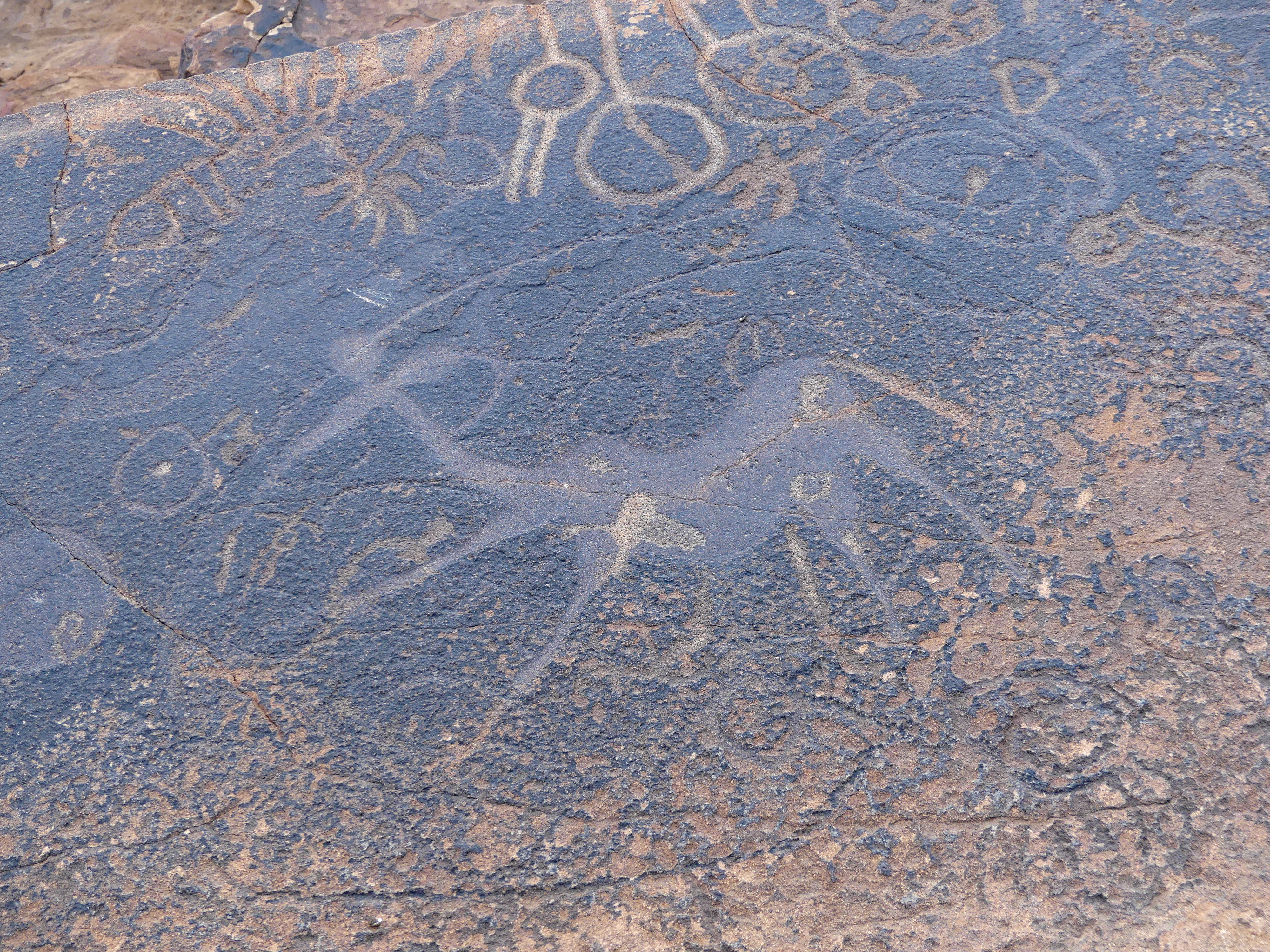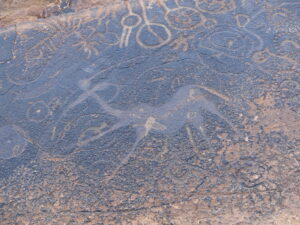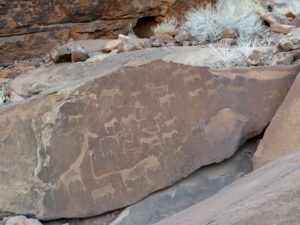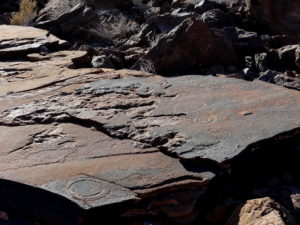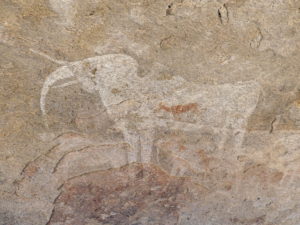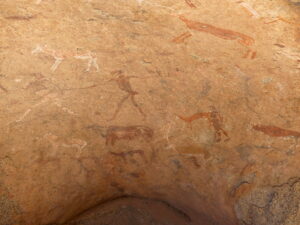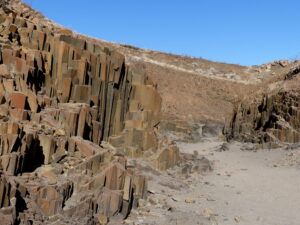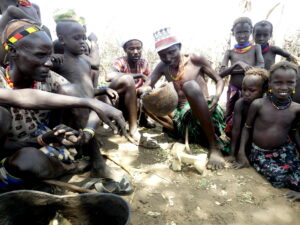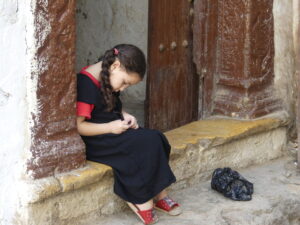In brief: Not only were the rock art figures here etched into the rock, but they served magical purposes.
We’ve seen plenty of rock art during our trip through the southwest of Africa. Yet, the art at Twyfelfontein in northern Namibia was quite different. First, the figures are engraved, not painted on the cave wall surfaces where the nomadic San people sheltered. Using quartz tools, the artists from up to 10000 years ago, chiseled through the sandstone patina to leave a more permanent image on the rocks.
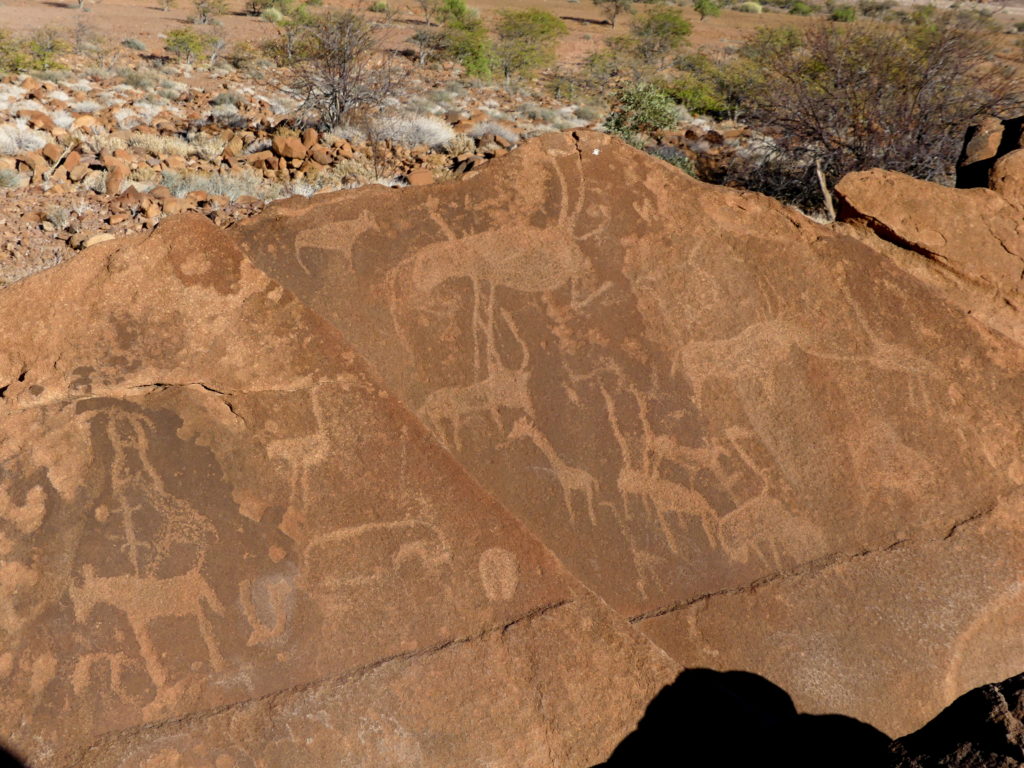
This panel demonstrates the wide array of animals carved here, from oryx (gemsbok) to wildebeest and giraffe. On the left, a woman is represented as well. And to the lower right, one artist engraved a many headed, dancing ostrich – likely another shamanist transformation.
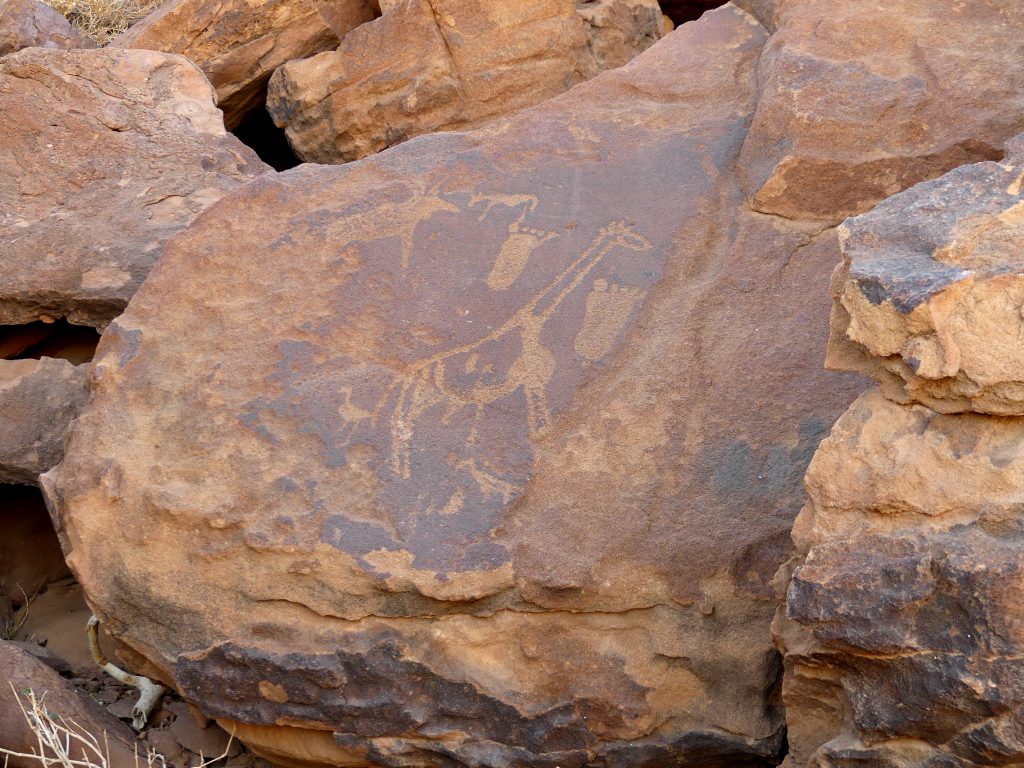
There are many, many engravings of animals at the UNESCO site of Twyfelfontein, such as giraffe, different antelope, predator cats, ostrich and so on. On this rock shard, the artist has added a personal touch, an engraved footprint.
The second difference at Twyfelfontein is that this site of boulder-strewn hills was a spiritual homeland for the people as well. So the art – as with the ostrich above – was linked to shamanistic practices, the channeling of divine spirits, not just stories of hunts and animal life.
The dancing (and pregnant) kudu, a famous engraving from here. On a rocky shard high above the valley floor, this leaping figure shows a transformation of the human into the spirit of the animal amid a backdrop of somewhat celestial symbols. That metamorphosis was the aim of the tribal shaman, who thereby drew on the kudu’s mythic characteristics to convey benefits from the spirit world to the human one.
On the bottom of this piece is the lion man. the most renowned engraving at Twyfelfontein. It prowls amid many antelope, giraffe and other animals. At the end of the lion’s bent tail is a human hand, clearly capturing the shamanistic ritual of merging human and animal characterisitics. To the lion’s left, a spindly legged giraffe shows an ascent to the heavens associated with the shaman’s trances. This piece had tumbled from its original site on a cave wall, fortunately settling so we can still see the images.
There was also a practical use of the engraving technique. On some rocks, we could see circles like the ones in this picture. It’s not just a random set of circles, but an ancient treasure map at Twyfelfontein. It directs the next nomadic visitors (or reminds the last ones) where to find the most important treasure in the desert, seasonal and permanent water sources.
We realized how lucky we were to see so many of the 2500 carvings at this sprawling UNESCO World Heritage site, despite how the cave walls have broken up, over time, and sent much art tumbling downhill.
Nearby
The entire region is replete with rock art. We visited nearby Brandberg to see some more traditional painted images.
Realistic painted image of an elephant at Brandberg near Twyfelfontein is about 2000 years old, with a red kudu antelope painted at a later time.
To the left of this other image walks the renowned “white lady” figure of Brandberg near Twyfelfontein, but she is no lady.
An archeologist monk visited here with some religious preconceptions and too much interest in relating what he found to Egyptian art. He saw a woman’s figure, not what others have determined. “She” dates from 2000 years ago, but actually shows a male shaman in ritual white paint and gear, probably with a later shamanistic figure to its right.
Beyond rock art
Tywfelfontein has become a popular place to visit for more than the rock art.
Here is part of a long canyon formed by ancient, retreating lave fields that left crystallized basalt columns, with the whimsical name of Organ Pipes.
The only other place we had seen this startling effect was around Iceland, and we still cannot quite explain how they formed.
Elsewhere in the desert plains lie huge tracts of petrified forests, trees washed down from highland areas and slowly hardened by minerals that penetrated the wood.
And near the Organ Pipes, Burnt Mountain is a surprising black lava hill nestled amid greener ones, the result of relatively recent volcanic activity.
(To enlarge any picture above, click on it. Also, for more pictures from Namibia, CLICK HERE to view the slideshow at the end of the itinerary page.)


